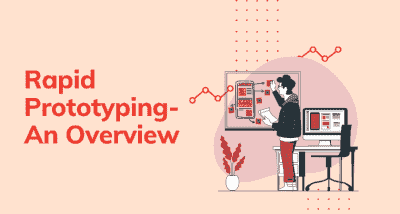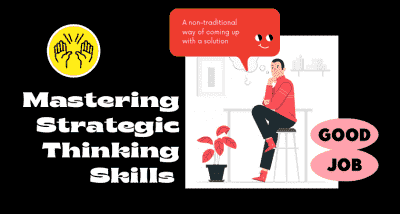The Age of Virtual Reality
- Amruta Bhaskar
- Aug 14, 2020
- 0 commentaires
- 1906 Vues

Virtual reality (VR) means experiencing things through our computers that don't exist. From that simple definition, the idea doesn't sound especially new. When you look at an amazing Canaletto painting, for example, you're experiencing the sites and sounds of Italy as it was about 250 years ago—so that's a kind of virtual reality. In the same way, if you listen to ambient instrumental or classical music with your eyes closed, and start dreaming about things, isn't that an example of virtual reality—an experience of a world that doesn't exist? What about losing yourself in a book or a movie? Surely that's a kind of virtual reality?
If we're going to understand why books, movies, paintings, and pieces of music aren't the same thing as virtual reality, we need to define VR fairly clearly. Virtual Reality is a believable, interactive 3D computer-created world that you can explore so you feel you are there, both mentally and physically.
Today the Virtual reality (VR) technology is applied to advance fields of medicine, engineering, education, design, training, and entertainment. VR is a computer interface which tries to mimic real-world beyond the flat monitor to give an immersive 3D (Three Dimension) visual experiences. Often it is hard to reconstruct the scales and distances between objects in static 2D images. Thus the third dimension helps to bring depth to objects.
VR has always suffered from the perception that it's little more than a glorified arcade game—a "dreamy escape" from reality. In that sense, "virtual reality" can be an unhelpful misnomer; "alternative reality," "artificial reality," or "computer simulation" might be better terms. The key thing to remember about VR is that it isn't a fad or fantasy waiting in the wings to whistle people off to alternative worlds; it's a hard-edged practical technology that's been routinely used by scientists, doctors, dentists, engineers, architects, archaeologists, and the military for about the last 30 years. What sorts of things can we do with it?
Difficult and dangerous jobs are hard to train for. How can you safely practice taking a trip to space, landing a jumbo jet, making a parachute jump, or carrying out brain surgery? All these things are obvious candidates for virtual reality applications. As we've seen already, flight cockpit simulators were among the earliest VR applications; they can trace their history back to mechanical simulators developed by Edwin Link in the 1920s. Just like pilots, surgeons are now routinely trained using VR. In a 2008 study of 735 surgical trainees from 28 different countries, 68 percent said the opportunity to train with VR was "good" or "excellent" for them and only 2 percent rated it useless or unsuitable.
Anything that happens at the atomic or molecular scale is effectively invisible unless you're prepared to sit with your eyes glued to an electron microscope. But suppose you want to design new materials or drugs and you want to experiment with the molecular equivalent of LEGO. That's another obvious application for virtual reality. Instead of wrestling with numbers, equations, or two-dimensional drawings of molecular structures, you can snap complex molecules together right before your eyes. This kind of work began in the 1960s at the University of North Carolina at Chapel Hill, where Frederick Brooks launched GROPE, a project to develop a VR system for exploring the interactions between protein molecules and drugs.
Apart from its use in things like surgical training and drug design, virtual reality also makes possible telemedicine (monitoring, examining, or operating on patients remotely). A logical extension of this has a surgeon in one location hooked up to a virtual reality control panel and a robot in another location (maybe an entire continent away) wielding the knife. The best-known example of this is the DaVinci surgical robot, released in 2009, of which several thousand have now been installed in hospitals worldwide.
Although it's still early days, VR has already been tested as a treatment for various kinds of psychiatric disorder (such as schizophrenia, agoraphobia, and phantom-limb pain), and in rehabilitation for stroke patients and those suffering degenerative diseases such as multiple sclerosis.
Architects used to build models out of card and paper; now they're much more likely to build virtual reality computer models you can walk through and explore. By the same token, it's generally much cheaper to design cars, aeroplanes, and other complexes, expensive vehicles on a computer screen than to model them in wood, plastic, or other real-world materials. This is an area where virtual reality overlaps with computer modelling: instead of simply making an immersive 3D visual model for people to inspect and explore, you're creating a mathematical model that can be tested for its aerodynamic, safety, or other qualities.
The promise of VR has loomed large over the world of computing for at least the last quarter-century—but remains unfulfilled. While science, architecture, medicine, and the military all rely on VR technology in different ways, mainstream adoption remains virtually nonexistent; we're not routinely using VR the way we use computers, smartphones, or the Internet. The 2014 acquisition of VR company Oculus, by Facebook, greatly renewed interest in the area and, for a little while, looked like it would change everything. Facebook's basic idea is to let people share things with their friends using the Internet and the Web. What if you could share not simply a photo or a link to a Web article but an entire experience? Instead of sharing photos of your wedding with your Facebook friends, what if you could make it possible for people to attend your wedding remotely, in virtual reality, in perpetuity? What if we could record historical events in such a way that people could experience them again and again, forevermore? These are the sorts of social, collaborative virtual reality sharing that (we might guess) Facebook is thinking about exploring right now. If that does eventually happen, the future of virtual reality looks very bright indeed.














